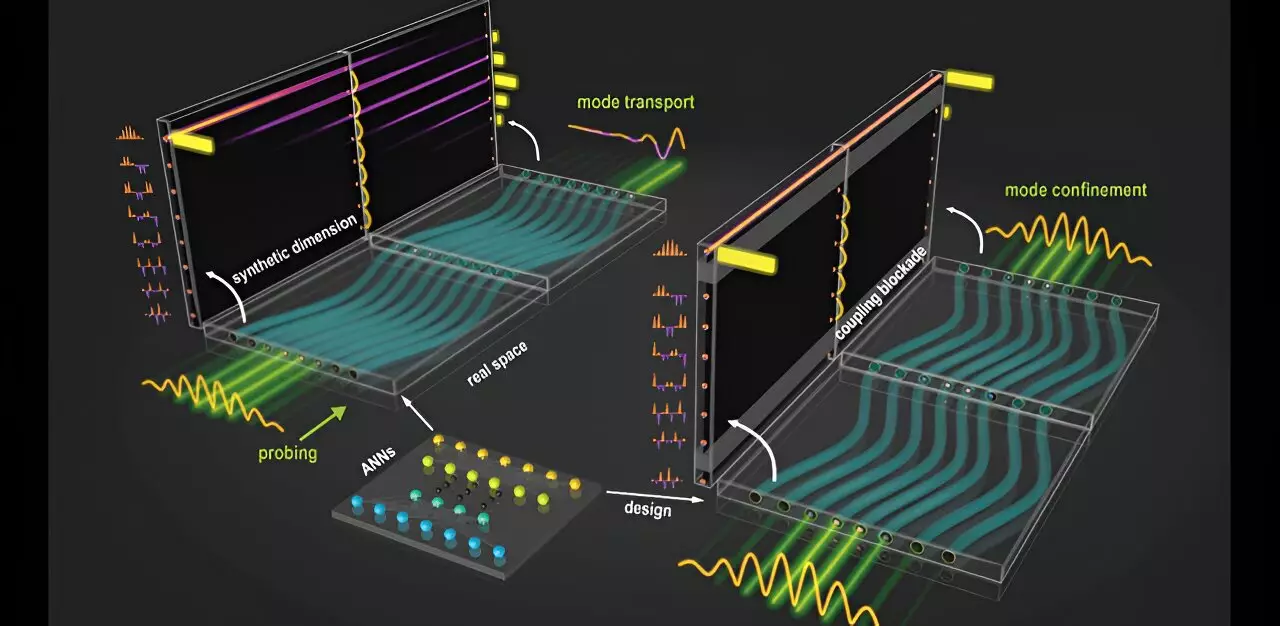In the realm of physics, synthetic dimensions (SDs) have emerged as one of the frontiers of active research, offering a pathway to explore phenomena in higher-dimensional spaces beyond our conventional 3D geometrical space. This concept has attracted significant attention, particularly in topological photonics, as it has the potential to unlock rich physics that are inaccessible in traditional dimensions. Researchers have put forward various theoretical frameworks to study and implement SDs, with the aim of harnessing phenomena like synthetic gauge fields, quantum Hall physics, discrete solitons, and topological phase transitions in dimensions higher than four.
One of the primary challenges faced in conventional 3D space is the experimental realization of complex lattice structures with specific couplings. Synthetic dimensions provide a solution to this challenge by offering a more accessible platform for creating intricate networks of resonators with anisotropic, long-range, or dissipative couplings. This capability has already led to groundbreaking demonstrations of non-Hermitian topological winding, parity-time symmetry, and other unique phenomena in the field of physics.
In the construction of synthetic dimensions, a variety of parameters or degrees of freedom within a system such as frequency modes, spatial modes, and orbital angular momenta can be utilized. This flexibility holds promise for applications across a wide range of fields, from optical communications to topological insulator lasers. The ultimate goal in this area is to build a network of resonators where any pair of modes can be coupled in a controlled manner, leading to advancements in data transmission, energy harvesting efficiency, and laser array radiance.
Recently, an international team of researchers reported in Advanced Photonics that they have developed customizable arrays of waveguides to establish synthetic modal dimensions. This advancement enables effective control of light in a photonic system without the need for additional complexities like nonlinearity or non-Hermiticity. By modulating perturbations for propagations that match the differences between different modes of light, the researchers have successfully demonstrated the potential of artificial neural networks (ANNs) in designing waveguide setups with desired mode patterns.
The researchers also used ANNs to design a special type of photonic lattice structure known as a Su-Schrieffer-Heeger (SSH) lattice. This lattice possesses a unique feature that allows for topological control of light throughout the system, showcasing the specific properties of synthetic dimensions. By fine-tuning waveguide distances and frequencies, the researchers aim to optimize the design and fabrication of integrated photonic devices, opening up possibilities for applications in areas such as mode lasing, quantum optics, and data transmission.
Professors Zhigang Chen and Hrvoje Buljan emphasize that the combination of topological photonics and synthetic dimension photonics, empowered by artificial neural networks, offers new possibilities for discoveries that could lead to unprecedented materials and device applications. The work in this field provides a glimpse into geometrically inaccessible physics, paving the way for exciting advancements in various scientific disciplines.


Leave a Reply